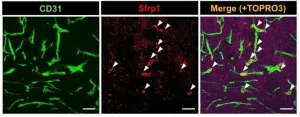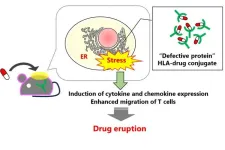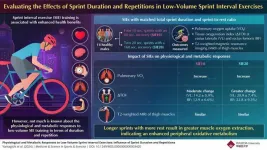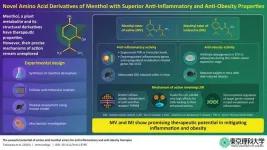(Press-News.org) CAMBRIDGE, MA – Every year, beer breweries generate and discard thousands of tons of surplus yeast. Researchers from MIT and Georgia Tech have now come up with a way to repurpose that yeast to absorb lead from contaminated water.
Through a process called biosorption, yeast can quickly absorb even trace amounts of lead and other heavy metals from water. The researchers showed that they could package the yeast inside hydrogel capsules to create a filter that removes lead from water. Because the yeast cells are encapsulated, they can be easily removed from the water once it’s ready to drink.
“We have the hydrogel surrounding the free yeast that exists in the center, and this is porous enough to let water come in, interact with yeast as if they were freely moving in water, and then come out clean,” says Patricia Stathatou, a former postdoc at the MIT Center for Bits and Atoms, who is now a research scientist at Georgia Tech and an incoming assistant professor at Georgia Tech’s School of Chemical and Biomolecular Engineering. “The fact that the yeast themselves are bio-based, benign, and biodegradable is a significant advantage over traditional technologies.”
The researchers envision that this process could be used to filter drinking water coming out of a faucet in homes, or scaled up to treat large quantities of water at treatment plants.
MIT graduate student Devashish Gokhale and Stathatou are the lead authors of the study, which appears today in the journal RSC Sustainability. Patrick Doyle, the Robert T. Haslam Professor of Chemical Engineering at MIT, is the senior author of the paper, and Christos Athanasiou, an assistant professor of aerospace engineering at Georgia Tech and a former visiting scholar at MIT, is also an author.
Absorbing lead
The new study builds on work that Stathatou and Athanasiou began in 2021, when Athanasiou was a visiting scholar at MIT’s Center for Bits and Atoms. That year, they calculated that waste yeast discarded from a single brewery in Boston would be enough to treat the city’s entire water supply.
Through biosorption, a process that is not fully understood, yeast cells can bind to and absorb heavy metal ions, even at challenging initial concentrations below 1 part per million. The MIT team found that this process could effectively decontaminate water with low concentrations of lead. However, one key obstacle remained, which was how to remove yeast from the water after they absorb the lead.
In a serendipitous coincidence, Stathatou and Athanasiou happened to present their research at the AIChE Annual Meeting in Boston in 2021, where Gokhale, a student in Doyle’s lab, was presenting his own research on using hydrogels to capture micropollutants in water. The two sets of researchers decided to join forces and explore whether the yeast-based strategy could be easier to scale up if the yeast were encapsulated in hydrogels developed by Gokhale and Doyle.
“What we decided to do was make these hollow capsules — something like a multivitamin pill, but instead of filling them up with vitamins, we fill them up with yeast cells,” Gokhale says. “These capsules are porous, so the water can go into the capsules and the yeast are able to bind all of that lead, but the yeast themselves can’t escape into the water.”
The capsules are made from a polymer called polyethylene glycol (PEG), which is widely used in medical applications. To form the capsules, the researchers suspend freeze-dried yeast in water, then mix them with the polymer subunits. When UV light is shone on the mixture, the polymers link together to form capsules with yeast trapped inside.
Each capsule is about half a millimeter in diameter. Because the hydrogels are very thin and porous, water can easily pass through and encounter the yeast inside, while the yeast remain trapped.
In this study, the researchers showed that the encapsulated yeast could remove trace lead from water just as rapidly as the unencapsulated yeast from Stathatou and Athanasiou’s original 2021 study.
Scaling up
Led by Athanasiou, the researchers tested the mechanical stability of the hydrogel capsules and found that the capsules and the yeast inside can withstand forces similar to those generated by water running from a faucet. They also calculated that the yeast-laden capsules should be able to withstand forces generated by flows in water treatment plants serving several hundred residences.
“Lack of mechanical robustness is a common cause of failure of previous attempts to scale-up biosorption using immobilized cells; in our work we wanted to make sure that this aspect is thoroughly addressed from the very beginning to ensure scalability,” Athanasiou says.
After assessing the mechanical robustness of the yeast-laden capsules, the researchers constructed a proof-of-concept packed-bed biofilter, capable of treating trace lead-contaminated water and meeting U.S. Environmental Protection Agency drinking water guidelines while operating continuously for 12 days.
This process would likely consume less energy than existing physicochemical processes for removing trace inorganic compounds from water, such as precipitation and membrane filtration, the researchers say.
This approach, rooted in circular economy principles, could minimize waste and environmental impact while also fostering economic opportunities within local communities. Although numerous lead contamination incidents have been reported in various locations in the United States, this approach could have an especially significant impact in low-income areas that have historically faced environmental pollution and limited access to clean water, and may not be able to afford other ways to remediate it, the researchers say.
“We think that there’s an interesting environmental justice aspect to this, especially when you start with something as low-cost and sustainable as yeast, which is essentially available anywhere,” Gokhale says.
The researchers are now exploring strategies for recycling and replacing the yeast once they’re used up, and trying to calculate how often that will need to occur. They also hope to investigate whether they could use feedstocks derived from biomass to make the hydrogels, instead of fossil-fuel-based polymers, and whether the yeast can be used to capture other types of contaminants.
“Moving forward, this is a technology that can be evolved to target other trace contaminants of emerging concern, such as PFAS or even microplastics,” Stathatou says. “We really view this as an example with a lot of potential applications in the future.”
###
The research was funded by the Rasikbhai L. Meswani Fellowship for Water Solutions, the MIT Abdul Latif Jameel Water and Food Systems Lab (J-WAFS), and the Renewable Bioproducts Institute at Georgia Tech.
END
Repurposed beer yeast may offer a cost-effective way to remove lead from water
A filter made from yeast encapsulated in hydrogels can quickly absorb lead as water flows through it
2024-05-15
ELSE PRESS RELEASES FROM THIS DATE:
NFCR CEO Dr. Sujuan Ba honored at AAPI Women's Gala 2024
2024-05-15
The National Foundation for Cancer Research proudly announces that our CEO, Dr. Sujuan Ba, was honored as one of the AAPI Women Leaders at the AAPI Women's Gala 2024 on May 14th in New York City. This prestigious event was hosted by The Serica Initiative to spotlight the outstanding achievements and contributions of Asian American and Pacific Islander (AAPI) women who are breaking barriers and making impacts in many sectors, enriching and adding value to our society.
This 8th year's gala, themed "Resilience and Perseverance," honored Dr. Ba for her exemplary leadership at NFCR and other organizations she is part of and her ...
Climate change is most prominent threat to pollinators, CABI Reviews paper finds
2024-05-15
A paper published in the CABI Reviews journal has found that climate change is the most prominent threat to pollinators – such as bumblebees, wasps, and butterflies – who are essential for biodiversity conservation, crop yields and food security.
The research, which is entitled ‘What are the main reasons for the world-wide decline in pollinator populations?’, suggests that many of the threats to pollinators result from human activities.
Pollinator populations are declining worldwide and 85% of flowering plant species and 87 of the leading global crops rely on pollinators for seed production. The decline of ...
New study links protein secreted by blood vessels to drug-resistant cancer
2024-05-15
Cancer is a leading cause of death globally. One of the primary reasons why cancer is such a deadly disease is the ability of cancer cells to become drug-resistant. After decades of medical research, scientists came to understand that malignant tumors often harbor a special population of cells called cancer stem cells (CSCs). Much like normal stem cells, CSCs can self-renew and differentiate into various cell types within a tumor, playing important roles not only in tumor growth and metastasis but also in the development of drug resistance.
Unfortunately, developing therapies targeting CSCs directly ...
Exploring the mechanism behind drug eruptions in the skin
2024-05-15
Although medications can often help patients find a cure or respite from their condition, millions of people worldwide suffer from unpredictable drug toxicities every year. In particular, drug eruptions which manifest through symptoms such as redness, blisters, and itching on the skin, are quite common. Severe drug eruptions can become life-threatening and can have long-lasting consequences. Thus, understanding how and why drug eruptions occur is an important area of research in medical science.
To this end, previous studies have identified specific variants of certain genes as potential causal agents of drug eruptions. Scientists believe that ...
Longer sprint intervals can improve muscle oxygen utilization compared to shorter intervals
2024-05-15
Physical activities like jogging, walking, cycling, and sprinting are activities known to engage the musculoskeletal system and result in the utilization of energy. Sprint interval training (SIT) is a type of sprinting exercise that involves cycles of intense exercise followed by a short duration of rest. How the durations of exercise and rest are structured can affect the impact of SIT on physiological responses. In recent years, the field of sports physiology has witnessed increased interest in optimizing SIT protocols. This surge can enhance the recognition of SIT’s efficacy in improving athletic performance and overall well-being, highlighting its versatility as a tool ...
Fighting fat and inflammation: Scientists develop powerful new compounds
2024-05-15
Modified derivatives of natural products have led to significant therapeutic advances and commercial success in recent times. Menthol is a naturally occurring cyclic monoterpene alcohol found in various plants, particularly in members of the mint family such as peppermint and spearmint. It is a common ingredient found in a wide range of confectionaries, chewing gums and oral care products. Interestingly, menthol also has high medicinal value due to its analgesic, anti-inflammatory, and anti-cancer effects.
In a recent study, a team of researchers led by Professor Gen-ichiro Arimura ...
New cardiac research will save women’s lives by improving detection of heart failure
2024-05-15
Peer-reviewed – Observational Study - People
An important new study has advanced how heart failure is detected in women – meaning more female patients can be diagnosed and at an earlier stage.
Researchers led by teams from the Universities of East Anglia (UEA), Sheffield and Leeds, have been able to fine-tune how magnetic resonance imaging (MRI) is used to detect heart failure in women’s hearts, making it more accurate.
Lead author Dr Pankaj Garg, of the University of East Anglia’s Norwich Medical School and a consultant cardiologist at the Norfolk and Norwich University Hospital, said: “By refining the method for women ...
Polyglycerol coating: A breakthrough in safer nanoparticle environmental remediation
2024-05-15
Nanoparticles (NPs) are often used to reduce environmental pollution by targeting harmful chemicals in soil and water that are released by industrial and agricultural activities. These NPs are engineered to absorb, degrade, or neutralize these pollutants, providing a potential solution to environmental contamination. However, when released into the environment, they can be consumed by organisms and transferred through the food chain, resulting in widespread toxicity.
To address this issue, a research ...
Circe Bioscience licenses technology to decarbonize industry with microbes developed at Wyss Institute at Harvard University
2024-05-15
The Wyss Institute for Biologically Inspired Engineering at Harvard University announced today that Circe, a startup developed at the Institute and spun out of Harvard, has signed a worldwide, exclusive licensing agreement coordinated by Harvard’s Office of Technology Development (OTD) to commercialize a novel bioproduction technology that could significantly reduce the carbon emissions of industries from food to aviation fuel.
Circe has raised more than $8 million to date from investors including Regen Ventures, Undeterred Capital, Ponderosa Ventures, Bee Partners, and Elementum Ventures.
“One of the great challenges ...
Parasitic worm likely playing role in decline of moose populations
2024-05-15
PULLMAN, Wash. – A parasitic worm that can infest the brains of moose appears to be playing a role in the decline of the iconic animal in some regions of North America.
Moose populations have been dwindling for years across the country due to many contributing factors, but new research at Washington State University has found the impact of Eleaophora schneideri, also known as the arterial worm, has likely been underestimated.
Researchers examined recently deceased Shiras moose in Idaho between March 2020 and July 2022. While the parasitic roundworm E. schneideri was not detected in any of the animals found in north Idaho, it was present in 10 of ...
LAST 30 PRESS RELEASES:
From fungi to brain cells: one scientist's winding path reveals how epigenomics shapes neural destiny
Schizophrenia and osteoporosis share 195 genetic loci, highlighting unexpected biological bridges between brain and bone
Schizophrenia-linked genetic variant renders key brain receptor completely unresponsive to both natural and therapeutic compounds
Innovative review reveals overlooked complexity in cellular energy sensor's dual roles in Alzheimer's disease
Autism research reframed: Why heterogeneity is the data, not the noise
Brazil's genetic treasure trove: supercentenarians reveal secrets of extreme human longevity
The (metabolic) cost of life
CFRI special issue call for papers: New Frontiers in Sustainable Finance
HKU Engineering scholar demonstrates the smallest all-printed infrared photodetectors to date
Precision empowerment for brain "eavesdropping": CAS team develops triple-electrode integrated functional electrode for simultaneous monitoring of neural signals and chemical transmitters during sleep
Single-capillary endothelial dysfunction resolved by optoacoustic mesoscopy
HKU three research projects named among ‘Top 10 Innovation & Technology News in Hong Kong 2025’ showcasing excellence in research and technology transfer
NLRSeek: A reannotation-based pipeline for mining missing NLR genes in sequenced genomes
A strand and whole genome duplication–aware collinear gene identification tool
Light storage in light cages: A revolutionary approach to on-chip quantum memories
Point spread function decoupling in computational fluorescence microscopy
BacPhase: Long-insert paired-end sequencing for bin marker construction and genome phasing
GmWOX1 regulates the mediolateral polarity of compound leaves in soybean
ChargeFabrica: An open-source simulation tool that aims to accelerate search for high performance perovskite solar cells
High levels of ADAR overexpression induce abundant and stochastic off-target RNA editing in rice protoplasts
On-demand upgraded recycling of polyethylene and construction of sustainable multifunctional materials based on the "LEGO" strategy
New "Stomata in-sight" system allows scientists to watch plants breathe in real-time
Anorexia nervosa may result in long-term skeletal muscle impairment
Narrative-based performance reviews deemed fairest by employees
New insights reveal how advanced oxidation can tackle emerging water pollutants
New review shows how biomass can deliver low-carbon gaseous fuels at scale
Climate change is quietly rewriting the world’s nitrogen cycle, with high stakes for food and the environment
Study finds SGLT-2 inhibitors linked to lower risk of diabetic foot nerve damage
Microbes may hold the key to brain evolution
Study examines how the last two respiratory pandemics rapidly spread through cities
[Press-News.org] Repurposed beer yeast may offer a cost-effective way to remove lead from waterA filter made from yeast encapsulated in hydrogels can quickly absorb lead as water flows through it





